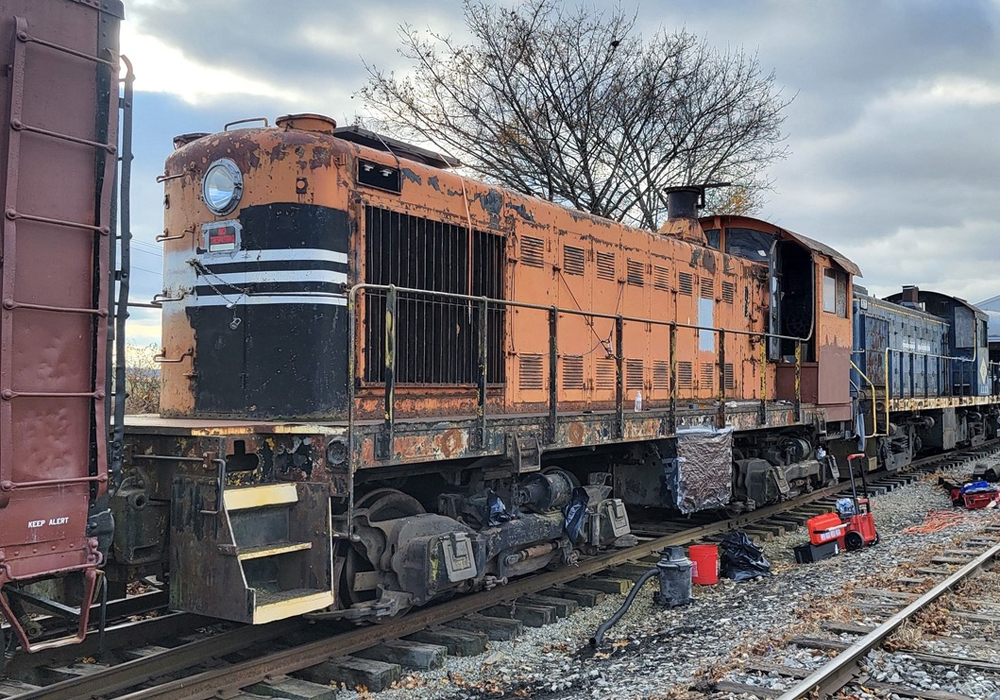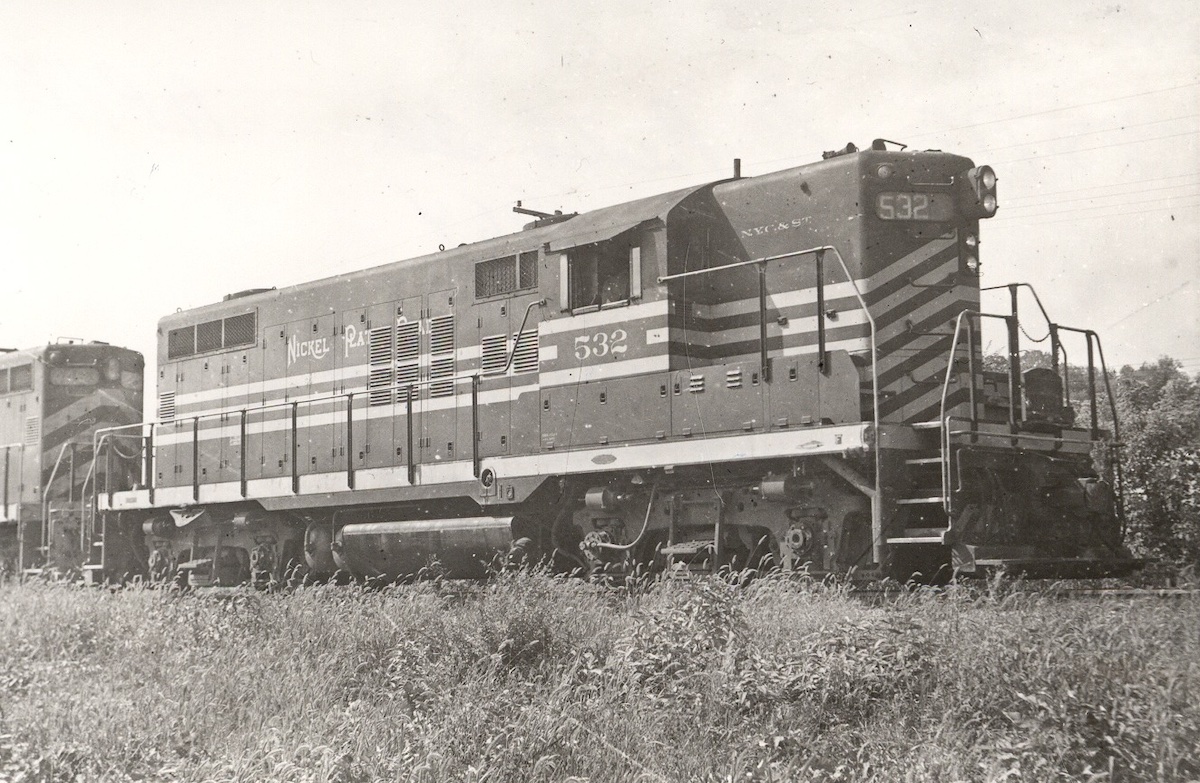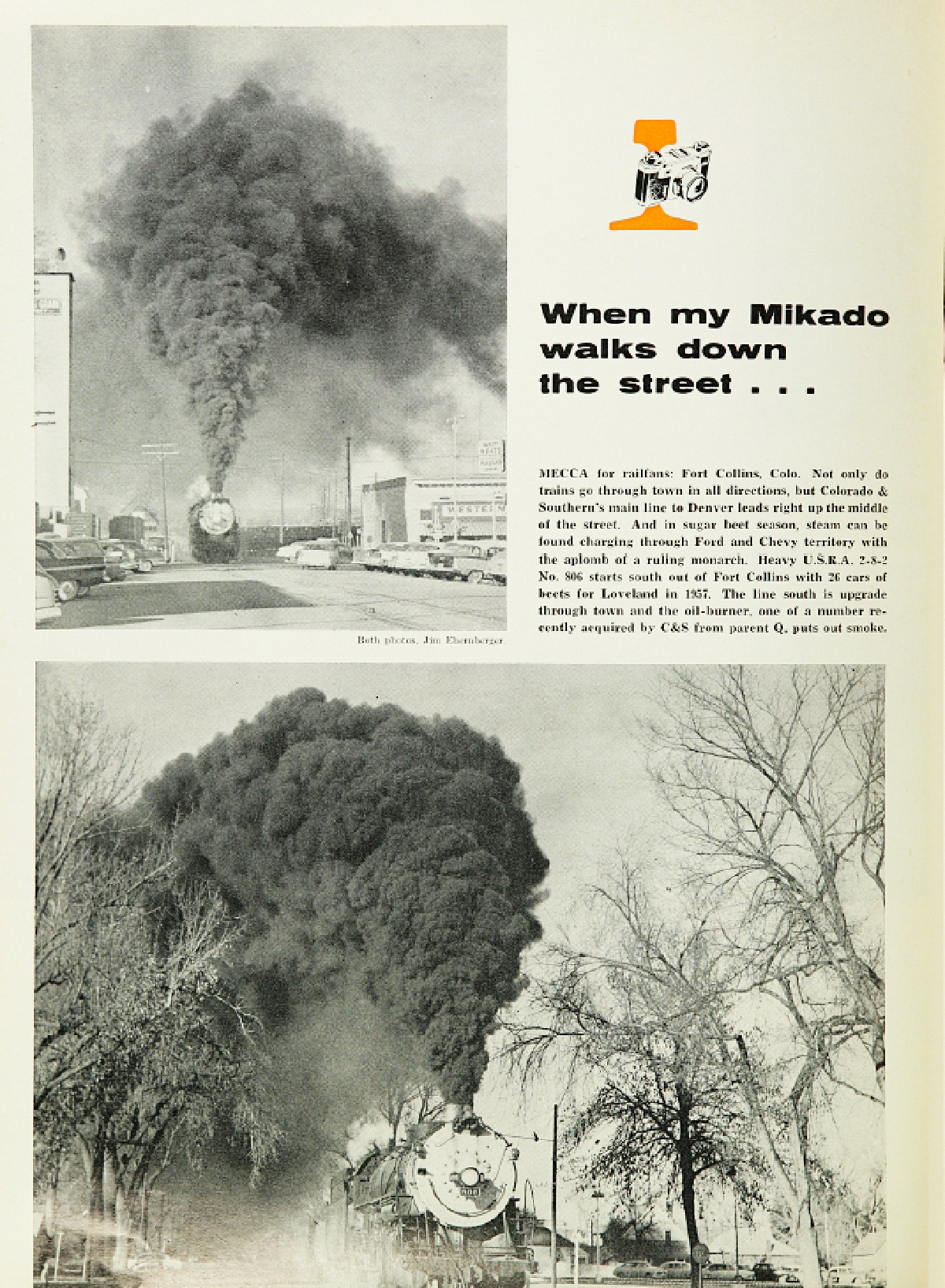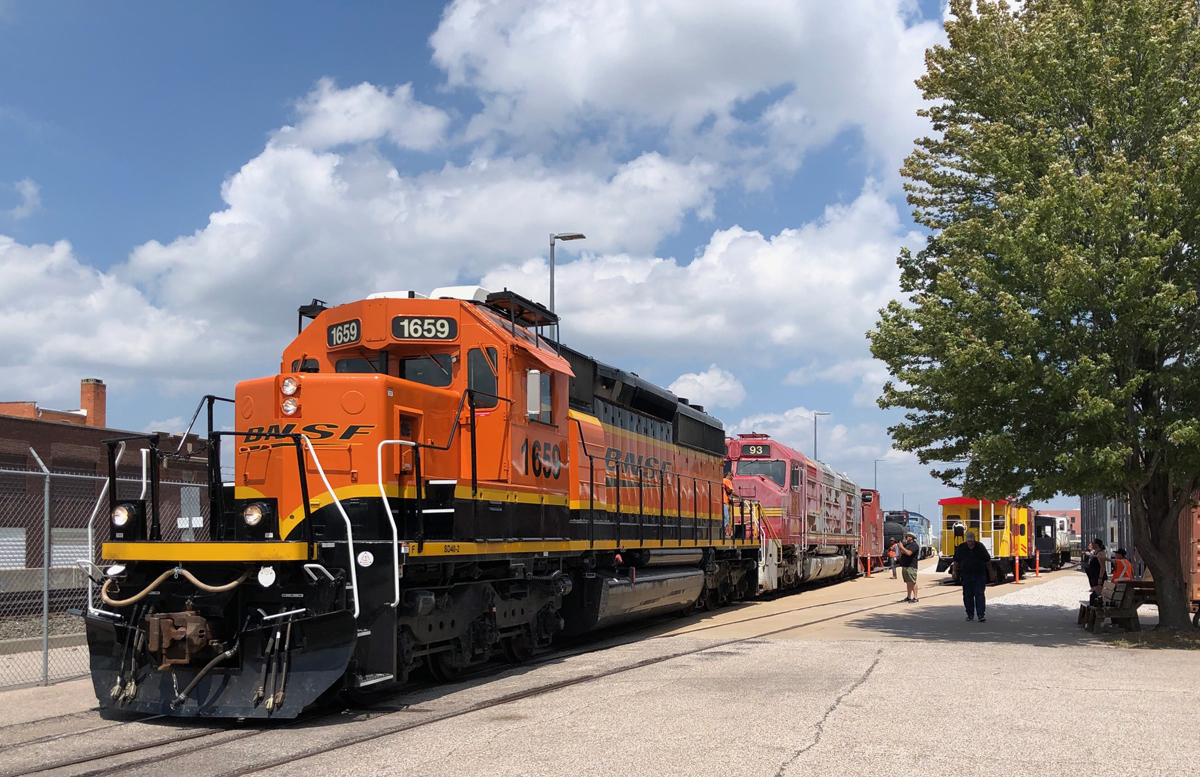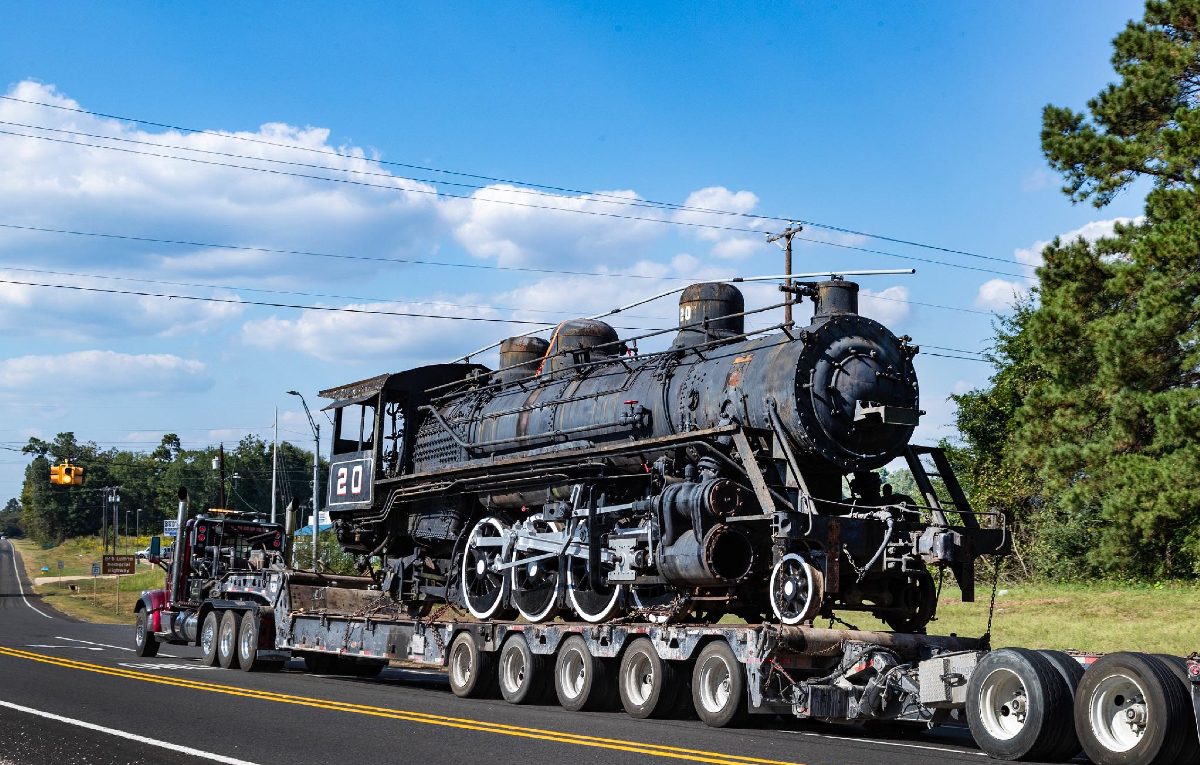
Yes, that was a steam locomotive traveling along Texas Route 224. Temple Lumber Co. No. 20 was moved 95 miles from Pineland to Rusk, Texas and its new home in the former Cotton Belt yard. The locomotive was acquired by the non-profit Southern Pine Locomotive Co. It will be restored and placed in a fresh exhibit venue.
The Southern Pine Locomotive Co. is a new organization seeking to tell the story of logging railroads in East Texas through No. 20. The group gained title to the locomotive, a former Santa Fe depot located in Pineland, and five acres of land donated by Rusk, according to Keith Bass, SPLCo. president. The SPLCo. directors all have considerable steam locomotive experience, and have extensive time with the Texas State Railroad, although the two groups are separate entities.
Why did the SPLCo. focus on No. 20? It is an unusual locomotive for a Texas logging railroad, says Bass. “Most logging Mikes [Mikados] are in the 70-ton range, sitting on 44-inch drivers,” he stated. “No. 20 weighs in at 96 tons and sits on 56-inch drivers. It’s more of a mainline logging locomotive.”
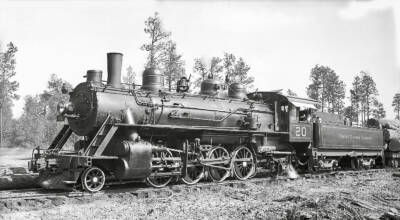
No. 20, a 2-8-2, was built in 1930 by Baldwin Locomotive Works for Pineland’s Temple Lumber Co. The original cost: $39,000. There are reports indicating No. 20 was operable until 1985 to supply the Pineland Temple lumber mill with steam. It was at this point the locomotive was donated to the City of Pineland and placed in Katherine Sage Temple Park, where it stayed until the recent move.
“This locomotive is special to our area,” Bass says. “We did not want to see the locomotive leave Texas and plan to put it in a nice home.”
In the park, a former Santa Fe depot was moved into place as a complement to No. 20. The SPLCo. plans to move the depot to Rusk in the near future.
The SPLCo. has not finally determined the form of restoration No. 20 will receive. “Now that we have secured it, our goal over the next 6 to 8 months is to tear into the locomotive and see what we have,” says Bass. “This will determine the level of restoration.”
Bass says everyone involved would like an operational restoration, but added, “Whatever we decide to do, we want to do it well.” Which is why the SPLCo. is taking care to measure each step, make sound decisions, and address all the details.
For more information on the project, The Southern Pine Locomotive Co. can be found on Facebook.






